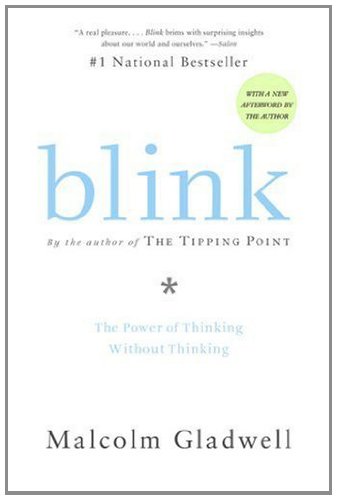All Nonfiction
- Bullying
- Books
- Academic
- Author Interviews
- Celebrity interviews
- College Articles
- College Essays
- Educator of the Year
- Heroes
- Interviews
- Memoir
- Personal Experience
- Sports
- Travel & Culture
All Opinions
- Bullying
- Current Events / Politics
- Discrimination
- Drugs / Alcohol / Smoking
- Entertainment / Celebrities
- Environment
- Love / Relationships
- Movies / Music / TV
- Pop Culture / Trends
- School / College
- Social Issues / Civics
- Spirituality / Religion
- Sports / Hobbies
All Hot Topics
- Bullying
- Community Service
- Environment
- Health
- Letters to the Editor
- Pride & Prejudice
- What Matters
- Back
Summer Guide
- Program Links
- Program Reviews
- Back
College Guide
- College Links
- College Reviews
- College Essays
- College Articles
- Back
Blink: The Power of Thinking Without Thinking by Malcolm Gladwell
Gladwell has long been one of my favorite authors. His works challenge the uniform way of thinking that has been impressed into my brain during my 12 years of school. By doing so he leaves me questioning the way I look at life, logic, and reason.
In Outliers Gladwell focused on success, in David and Goliath he advised on conquering the unknown, and now in his latest installment Blink he comments on how we process information. Acting as the culmination of the works that precede it Blink works to explain Gladwell’s writing style, while also introducing a new take on the way we should think.
Gladwell’s writing style is unique. He formats his books into short chapters normally only about 3-5 pages which focus on small anecdotes. In each section he overviews a scientific investigation, and then analyzes the findings. All of the studies he writes about relate to the central theme in the work. In Blink the theme is choosing which knowledge is important to remember and which you can throw away. Gladwell refers to this idea as “thin- slicing”. His goal in writing Blink is to motivate people to allow their minds to analyze information, instead of letting someone else do it for them.
Throughout the work Gladwell hops from one study to the next but never spends enough time on one idea to fully explain it. This choice leaves his readers questioning and practically begging for more information. By doing this Gladwell gives his readers a false sense of understanding because they believe they agree with Gladwell’s ideas and fully understand where they are coming from. In reality as readers we are only getting a glimpse or a “blink” into the ideas that Gladwell is exploring.
Gladwell uses his own technique of “thin- slicing” and forces it upon his readers in every work he has published. By only given his readers a glimpse into his thoughts, and reason he allows us to see only a small peice of where he formulates his ideas. He does this in hopes that the reader will take the small amount of information provided and decide for themselves what they think.
By the end of Blink I found my jaw dropping to the ground, as I realized that all of the time I have spent reading and re- reading Gladwell’s books was really just Gladwell playing with my mind. Gladwell pressure us to use our own mind, take the small amount of information we are given, process it, and create our own interpretation. Looking back now I realize that after reading his books one study, or chapter never really sticks with me but, the theme of the work will. When asked to summarize one of Gladwell’s books I always respond with the theme, and then adapt it to my life to explain how it’s relevant. Funny, without trying i’ve been thin- slicing my whole life. It just took the genius- Gladwell to point it out to me.
Understanding this idea, really solidifies how talented Gladwell really is. What other author can introduce a theory, and get a reader to implement (and prove for themselves) that theory works in only 400 pages.
Similar Articles
JOIN THE DISCUSSION
This article has 0 comments.


An analysis of Gladwell's newest installment